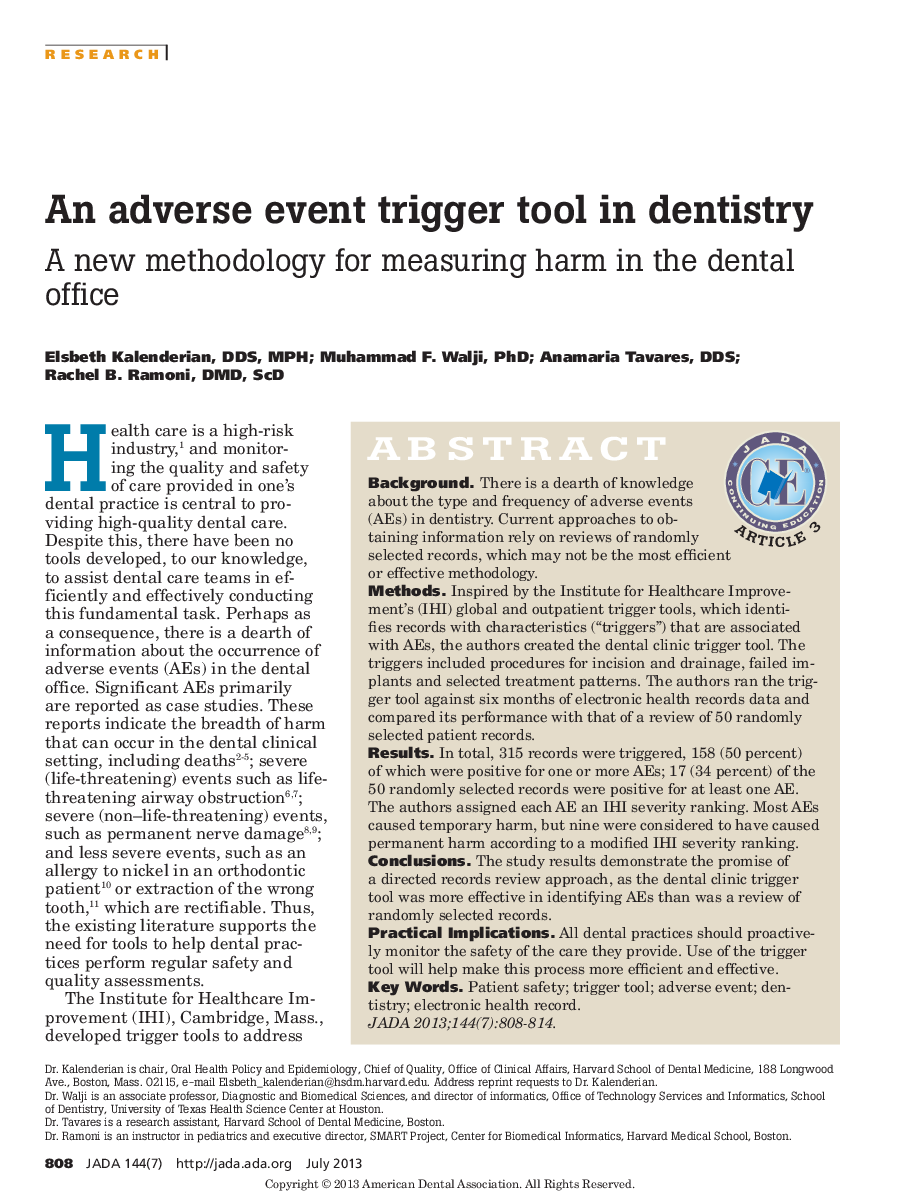| Article ID | Journal | Published Year | Pages | File Type |
|---|---|---|---|---|
| 3137512 | The Journal of the American Dental Association | 2013 | 7 Pages |
ABSTRACTBackgroundThere is a dearth of knowledge about the type and frequency of adverse events (AEs) in dentistry. Current approaches to obtaining information rely on reviews of randomly selected records, which may not be the most efficient or effective methodology.MethodsInspired by the Institute for Healthcare Improvement's (IHI) global and outpatient trigger tools, which identifies records with characteristics (”triggers“) that are associated with AEs, the authors created the dental clinic trigger tool. The triggers included procedures for incision and drainage, failed implants and selected treatment patterns. The authors ran the trigger tool against six months of electronic health records data and compared its performance with that of a review of 50 randomly selected patient records.ResultsIn total, 315 records were triggered, 158 (50 percent) of which were positive for one or more AEs; 17 (34 percent) of the 50 randomly selected records were positive for at least one AE. The authors assigned each AE an IHI severity ranking. Most AEs caused temporary harm, but nine were considered to have caused permanent harm according to a modified IHI severity ranking.ConclusionsThe study results demonstrate the promise of a directed records review approach, as the dental clinic trigger tool was more effective in identifying AEs than was a review of randomly selected records.Practical ImplicationsAll dental practices should proactively monitor the safety of the care they provide. Use of the trigger tool will help make this process more efficient and effective.
